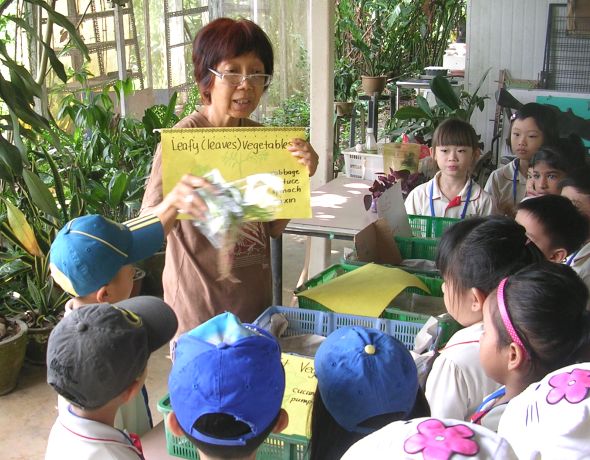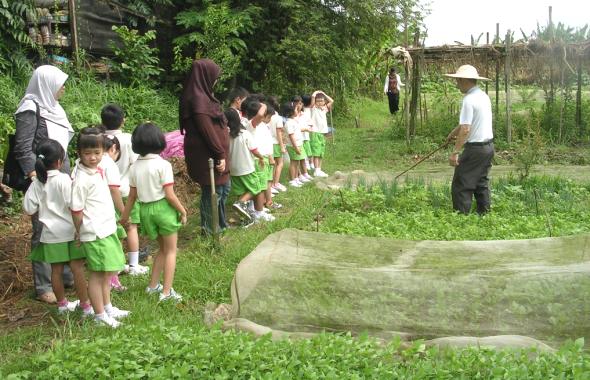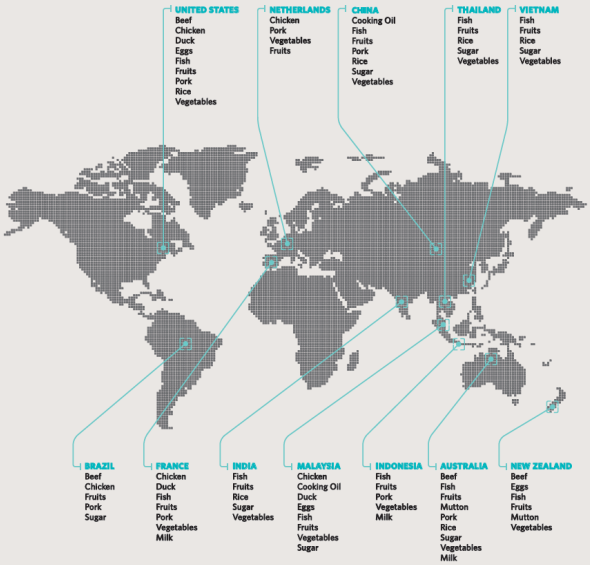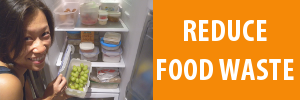Learn About Food Sources
By Save Food Cut Waste
Evelyn Eng is not your typical Singaporean, rather she’s a farmer who believes in organic farming, nature conservation and healthy eating. 12 years ago, Evelyn started the Green Circle Eco-Farm with her husband and adopted the organic farming of vegetables and fruits, which is grown without the use of chemicals. She allows nature to coexist with the crops, and composts weeds and discarded mung beans to use as fertilisers.
Being a farmer in Singapore is tough with the hot and humid conditions. Evelyn stays at her farm, working every day to tend to her crops. She explains that it is hard work to grow food and be a farmer, especially as it is seen as a lowly occupation in Singapore. The hotter weather in recent years is also affecting her crops, as she feels the impact of climate change.
When we visited the farm, we saw a bright side to Evelyn’s work. She was hosting a group of pre-schoolers and educating them on the different types of food on the farm, and on living in harmony with nature. They listened attentively to her and seem to enjoy their walk around the farm with the guides. It’s never too early to educate our children on food sources and the growing of food.
Hopefully, when these children learn about where food comes from and how farmers like Evelyn toil to produce their food, they would better appreciate their food when eating and thus waste less food when they grow up. It gives us hope to know that the next generation is learning the right values. And we’re sure adults can and must do better.
Learn about where your food comes from and understand how farmers toil to produce your food, we’re sure that would help you better appreciate the food you eat and thus waste less food.
Singapore’s Food Sources
Most of the food that we consume in Singapore is imported. According to the Agri-Food and Veterinary Authority of Singapore (AVA) Annual Report 2011-2012, Singapore imports more than 90% of our food and the major sources of our food supply are from these countries:
Last year in Singapore, there are about 368 land and sea-based farms occupying about 822 ha or only 1% of Singapore’s land area (and not all are producing food for consumption). In 2011, our farms produced 7% of the leafy vegetables, 7% of the fish, and 24% of the eggs consumed in Singapore. AVA’s target is to raise our sufficiency in leafy vegetables, fish, and eggs to 10%, 15%, and 30%, respectively.
Farms in Singapore
You can start to learn about food sources and find out how some of our food is grown or reared by visiting our local farms.
Check out the Kranji Countryside Association (KCA) set up by a group of farmers in the rural north-western corner of Singapore to promote local agriculture and food production, eco-tourism, education, recreation and conservation. The farms produce food such as vegetables, fruits, fish, eggs, frogs, and goat milk. You can contact the farms under the KCA to arrange for a tour.
Also check out Evelyn’s Green Circle Eco-Farm, an organic vegetables and fruits farm located at Neo Tiew Road, which provides farm tours for schools and groups. Here’s more photos taken at the farm:
Support our local farms and buy local food! By buying food produced in Singapore instead of shipping food from overseas, you help to reduce the food wastage during transportation and storage, the resources spent and carbon emissions generated.
Start today to learn about your food sources, understand that it is not easy for farmers to grow your food, better appreciate your food and waste less food, and support our local farmers too!
Image credit: Major Sources of Food Supply, AVA Annual Report 2011-2012
Source credit: AVA Annual Report 2011-2012; Kranji Countryside Association; Green Circle Eco-Farm












Hello, can I ask if you grow rice in Singapore other than your organic food, I am also curious to know the amount of minerals you add to your crops, and how many times you water the crops? Do you